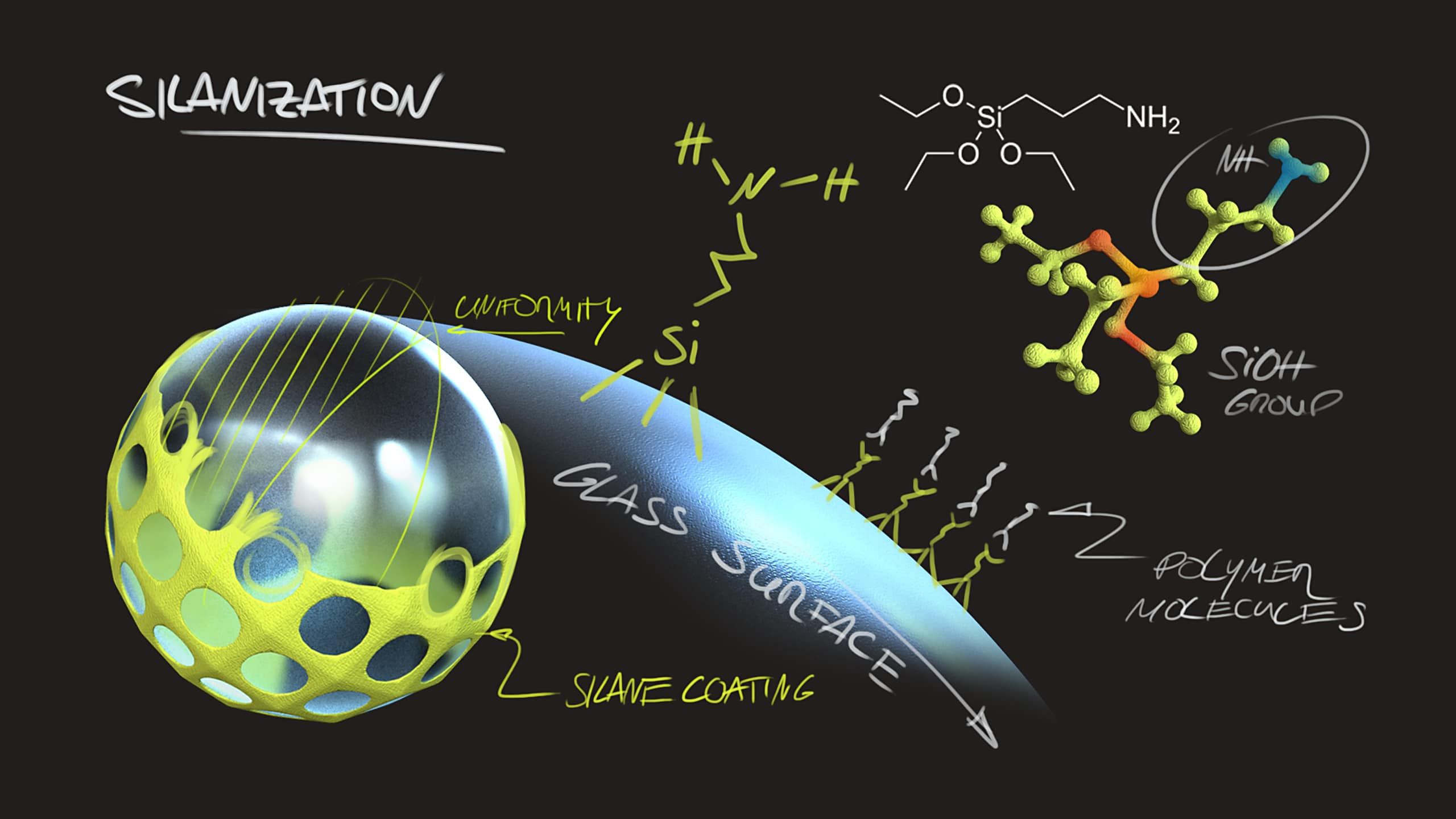See what holds it all together
For the silane coating of glass beads, choosing the right coupling agent is key. Using SWARCOFORCE glass beads as filler and reinforcement materials for plastics is a practical and profitable idea. The only problem is that on the molecular level, glass does not have a particularly strong affinity towards organic polymers. Coating the beads with adhesion promoters is a valid solution. To produce these stable polymer-glass systems, silanes are the optimal choice for bond coating.

Organofunctional silanes are hybrid compounds within a single molecule. Therefore, they can be used as molecular bridges between organic polymers and inorganic materials, such as glass beads. Silanes have an organofunctional group (amino, glycidoxy, methacryloxy groups) to ensure adhesion to the polymer, and a methoxy or ethoxy group to bond with the surface of the inorganic filling agent. The choice of the functional group – and thus, of the silane – depends on the properties of the plastic to be modified.
It’s All Better with Beads
At SWARCO Indusferica, SWARCOFORCE glass beads can be coated with the silane that is suitable for the plastic in question. The coating of the glass beads occurs directly after the production process and is tailored to the client’s needs. Silane-modified glass beads reinforce plastics, enabling their use for a diverse range of applications. The enhanced adhesion to the matrix made possible by the adhesion promoters usually improves the mechanical properties of the moulded plastic component considerably.